I’m Todd Sanders, a game designer and graphic designer from Pittsburgh, Pennsylvania. I’ve been designing games for seven years now and recently have had the good fortune to work with LudiCreations on the publication of several of my games in a line we are calling the Sanders Select Series or SSS for short. We have eight games planned for the series, coming out over the next few years.
My game design career actually began as a visual re-designer of older board and card games from the 1980s. I am probably best known for my visual redesigns of Barbarian Prince and Hammer of Thor (700+ cards and over 1000 counters for that game). I take older games, back in the era before computers and desktop publishing, and redesign the components for a modern gaming audience. This can often include scoring tracks, larger counters with clearer iconography and reformatted rulebooks with a better hierarchy of rule structures.
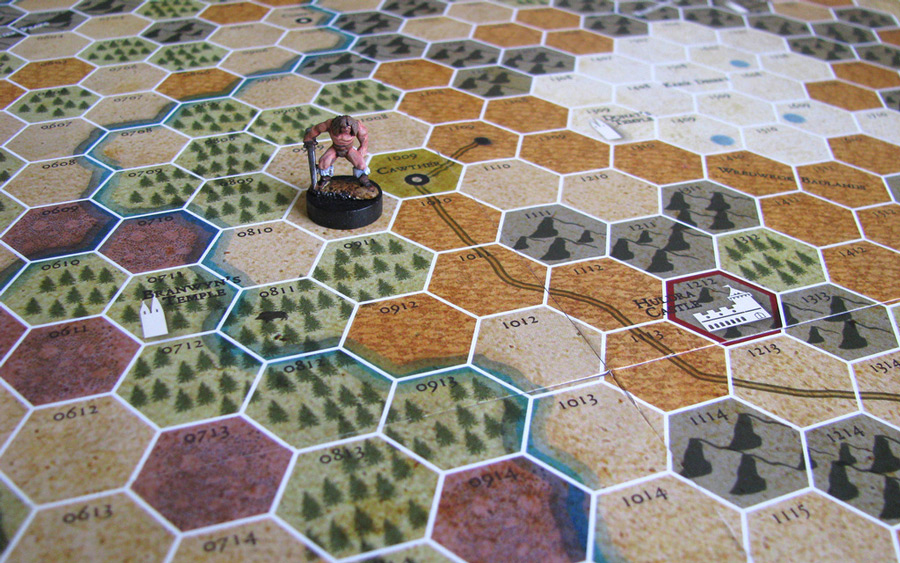
From there I moved on to entering contests on BGG – One Page, 54 Cards, Solitaire Games, 24 Hour RPG Design – and discovered I had a knack for designing solo games as well as short games with strong thematic elements, good player interaction and a dose of humor. My 20 year background as a graphic designer has enabled me to develop a strong minimalist visual style for my games. I am very active in BGG’s Print and Play (PnP for short) community and have over 60 games to my design credits. The PnP forums and contests are an excellent way to hone your game design skills and receive excellent feedback on mechanics and strategic elements in games.
These days, in addition to designing my own games, I work as a graphic designer for several game publishers on the strength of my reputation as a Print and Play designer.
My newest game with LudiCreations is IUNU, a set collection game with an Egyptian theme and minimalist graphics. I’ve worked with LudiCreations for over a year now to streamline the mechanics and increase player interaction. I feel we’ve created an easy to learn game with a lot of play depth. We have done research into the Dynasties of Egypt and these historic and thematic narrative elements reinforce the player actions and strategic decisions.
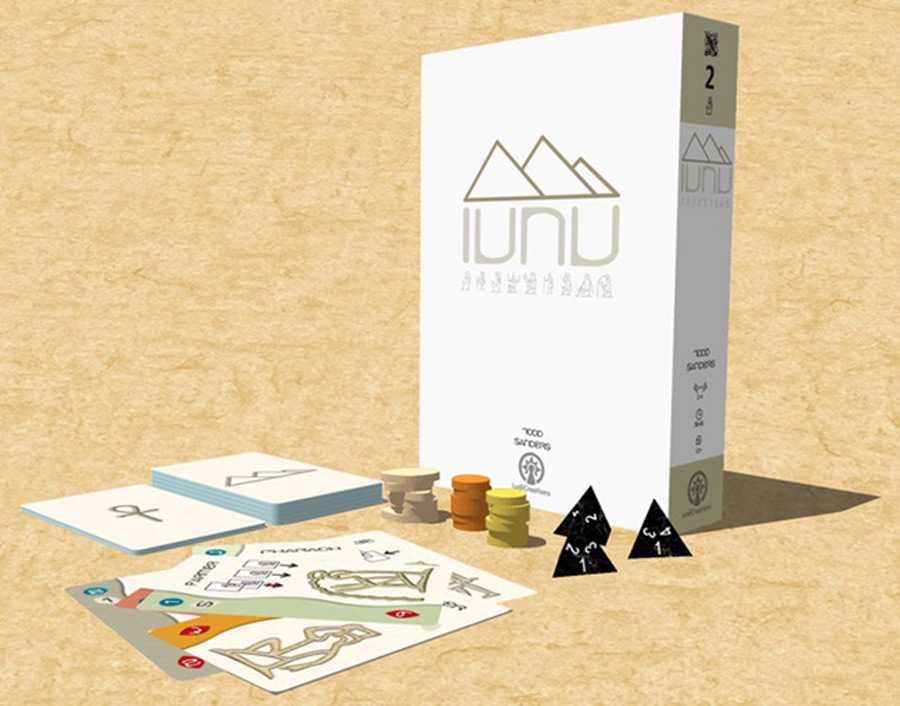
Some thoughts on the design history of IUNU:
Have you ever had one of those nights when you should be writing up rules for your solo game entry or working on a completely different project and suddenly you get a left field game idea in your head and, in about 20 minutes, the core idea is fully formed, seems elegantly workable, and seems to merge theme and mechanics well?
Often I find this is the case with my designs – the best and most elegant games come fully formed to me in under a half hour.
For IUNU, the idea was the kind of cards and their frequency in the deck had an inverse relationship to their value.
So 1 Pharaoh is worth 9 points, 2 Scribes are each worth 8 points, 3 Nobles are each worth 7 points and so on down to 9 Farmers each being worth 1 point. This card count works very well with a standard 54 card deck (my favorite starting point for a design usually is 54 cards. It is a very malleable number that easily divides into subsets of 3, 6, 9 etc…).
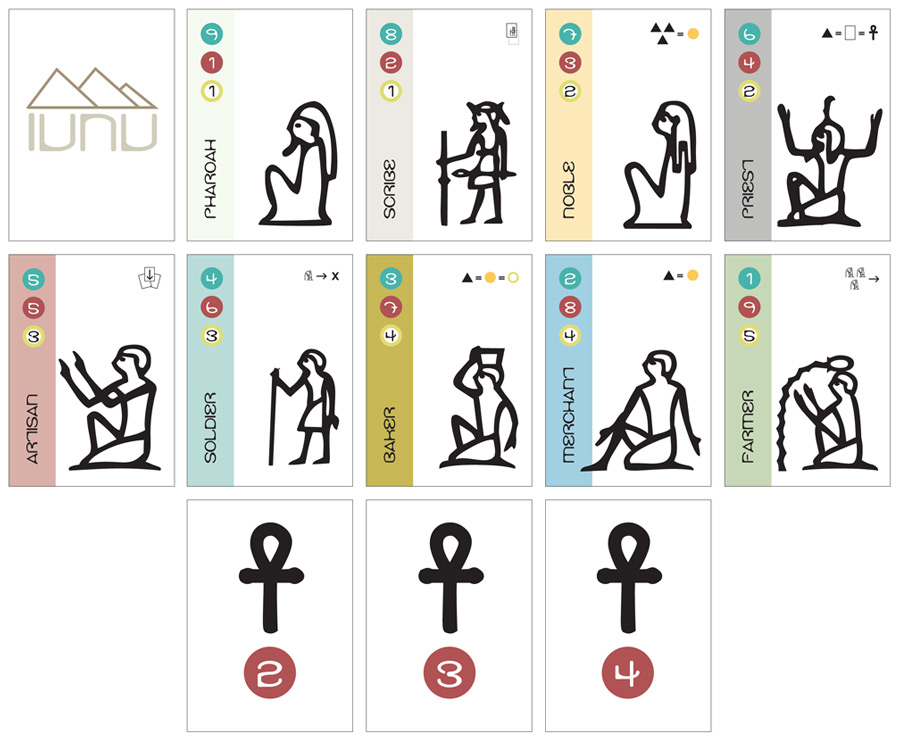
The Egyptian theme for the game was suggested by this idea of 9 which is three 3s or the three main pyramids at Giza in Egypt (which nicely tied into three 4-sided dice, a great visual link to Ancient Egypt thematically).
A quick bit of research led me to 9 types of citizens and their hierarchical order, and I was off and running. Each of these types of citizens then meant I could have a separate action for each, thematically tied into their caste when the cards are played in sets.
• Pharaohs are singular and control the roll of the dice, or the fate of their subjects.
• Scribes are the link to the past and rewrite history (allowing a player to save a card to be revealed at game’s end).
• Nobles and Merchants benefit from the economy (the dice become an economic engine in the game and the Nobles and Merchants want the die values high).
• Priests control the afterlife (which, with a 54 card deck, let me use the remaining cards for in-game bonuses which affect the scoring) and fate.
• Artisans create culture and opportunity (a player may draw extra cards).
• Bakers bake bread which feeds the populace (the Bakers want low dice numbers to buy wheat cheaply to bake bread) and a well fed populace is worth more (this was an exciting mechanic to me because it meant I could award bonus points based on the types of Citizens with the lower class castes receiving larger bonuses because they did the work.)
• Soldiers protect the populace and raid other kingdoms.
• And the Farmers, who were the most populous in the game, were worth the least number of points individually, but who, when fed, were worth the most bonus points.
The dice become a very important aspect of the game, setting up an economic push and pull between players when laying down sets of cards. I happened upon the idea that once a die was used for something its value would be lowered by one. So, when to play Nobles, Merchants or Bakers, mattered strategically.
For those who follow my board game design forum, you know that I am always working on the artwork for a game while working out the mechanics. This organic sort of design growth works very well for me and lets me match the visual quality of a game with how it plays. In the case of IUNU, the initial card designs were very close to the final version.
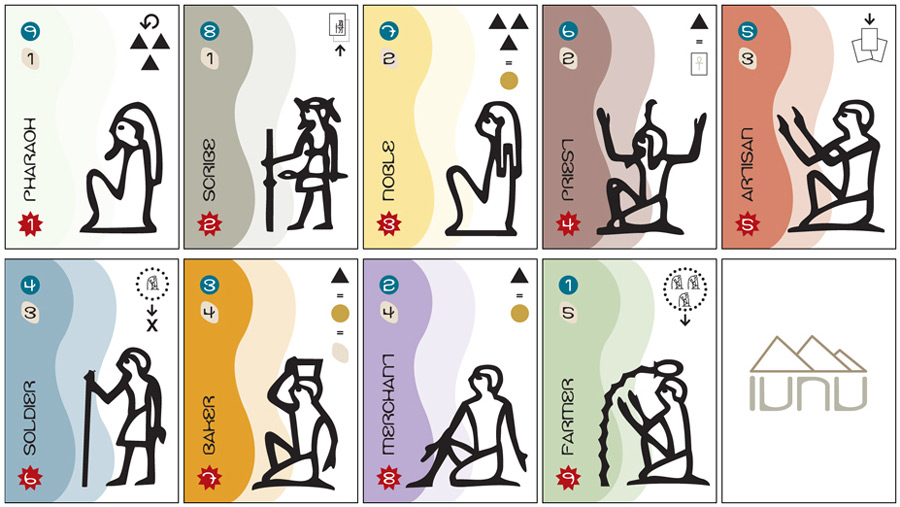
A second iteration fixed the color scheme and added icons for the Afterlife card and some additional symbol refinement. The game logo was perfect from the very start (as a side note I drew the triangle logo, representing the pyramids, from the actual tourist marketing photo they use for the Giza Pyramid advertising).
Below is a look at some 3d models of the finished artwork and components for the published version of the game.
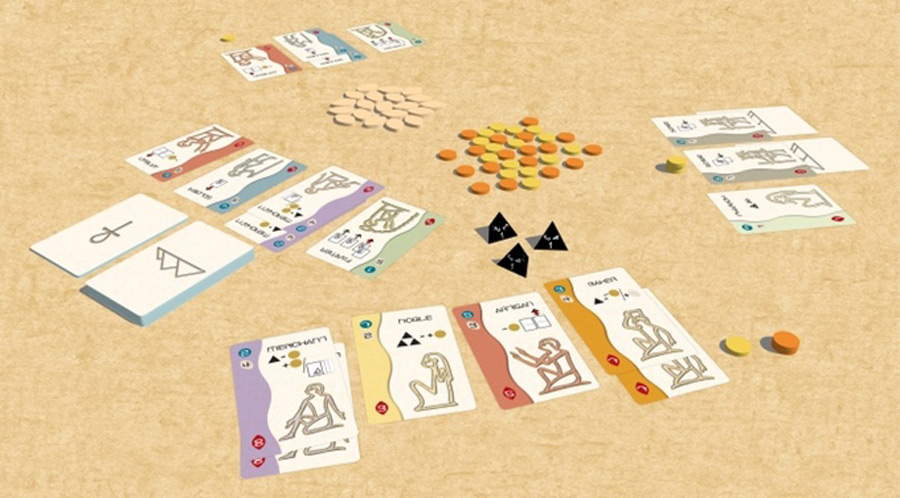
And that is a brief look into the design of IUNU. I hope you enjoy playing the game as much as I had designing it.
Photo credits: Todd Sanders & LudiCreations / Used with permission.
Did you like this story? Please share or comment. Go to this page to submit a story yourself. Subscribe to our online magazine here!
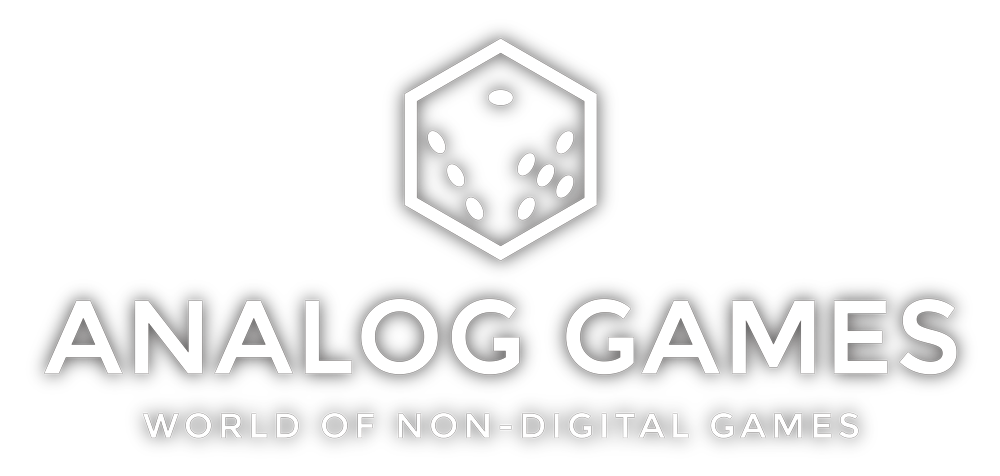
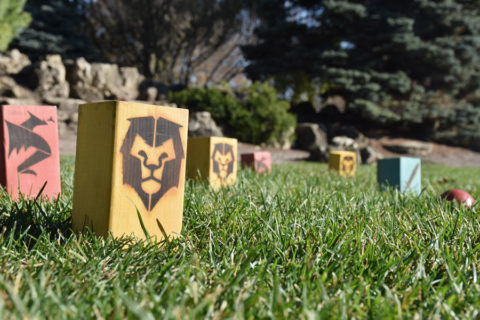
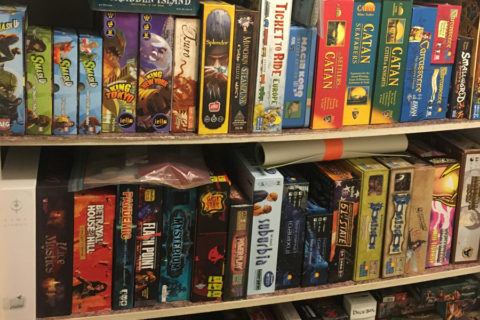
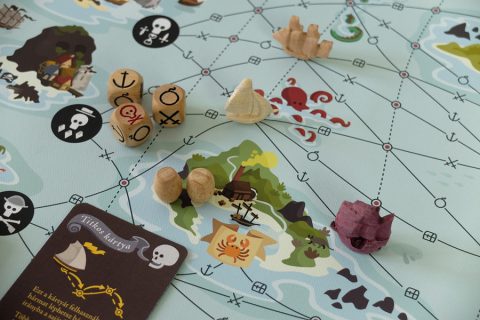
Just wonderful. Interesting, well written and illustrated, the right length and personable. Thanks. Certainly makes me want your game.
Thank you very much Garry.
This version of minimalist design looks very interesting and stylish, but I think that my children will not be inspired by this look.
에볼플레이 먹튀검증 안전노리터
Your blog is like a Christmas gift box. I love that there are so many nice posts. Every time I open your new post, I look forward to it as much as I do when I open a Christmas gift box. I want more people to know your blog. 메이저토토
I read your posts over and over again during the summer vacation. Your writing makes me think deeper the more I read it. When I first read it, there were some parts that were not readily accepted, but as time went by, it kept hovering in my head and thinking a lot. After reading your article, I also wrote about my blog. I want you to come and check. 토토사이트추천
You need to know that you’re doing a really good job. Your writing inspired me, and I recommend your blog to people around me. Your posts and blogs have a good influence. I really like your blog. 먹튀검증사이트
It is actually a great and useful piece okind of site
Your explanation is organized very easy to understand!!! I understood at once. Could you please post about safetoto ?? Please!!
Why couldn’t I have the same or similar opinions as you? T^T I hope you also visit my blog and give us a good opinion. majorsite
Excellent to the point article and news.. Well appreciated, My sites:
OKBet
SexyPG1688 777wwเว็บออนไลน์ที่ให้ได้มากกว่า
Thank you for your sharing. I am worried that I lack creative ideas. It is your article that makes me full of hope. Thank you. But, I have a question, can you help me?
Your article gave me a lot of inspiration, I hope you can explain your point of view in more detail, because I have some doubts, thank you.
Your article gave me a lot of inspiration, I hope you can explain your point of view in more detail, because I have some doubts, thank you. 20bet
I am a sports fan and I love to know about the games and also about the clothes that are trending like this Novak Djokovic 22 Jacket.
“I really enjoyed your presentation. Your passion for the subject really shone through and it was contagious. Great job!” Taylor Swift Chiefs Jacket
It’s interesting to read, thanks! I must say that devising innovative solutions is a time-consuming process, even when employing the most cutting-edge tools. As a preferred choice, I opt for graphics like the pictures of witch hands for my projects on this user-friendly platform. This resource enables swift discovery of suitable image graphics through categorization by types, colors, locations, and orientations, streamlining the search process.
It’s a game. Five dollars is free. Try it It’s not an easy game
->-> 카지노검증업체 .COM
When a total solar eclipse crosses North America on Monday 8 April, an estimated 31 million people will be in its수원출장 path – watching. Many more are likely to travel for the event, which will be visible across large swathes of the US and Mexico.
암호 화폐 결제가 인기를 끌면서, 카지노사이트 역시 기존 결제 수단 외에 암호 화폐 결제 옵션을 추가로 제공하기 시작했습니다. 최근에는 암호 화폐 결제만 받는 비트코인 전용 카지노도 존재합니다. 비트코인카지노는 비트코인, 라이트코인, 이더리움 등과 같은 다양한
Your point of view caught my eye and was very interesting. Thanks. I have a question for you.
Your point of view caught my eye and was very interesting. Thanks. I have a question for you.
Your article helped me a lot, is there any more related content? Thanks!
flush factor plus scam: flush factor plus scam
arctic blast scam: arctic blast scam
venoplus 8 scam: venoplus 8 scam
Java Burn scam: Java Burn scam
Nagano Tonic scam: Nagano Tonic scam
I don’t think the title of your article matches the content lol. Just kidding, mainly because I had some doubts after reading the article.
Your point of view caught my eye and was very interesting. Thanks. I have a question for you.